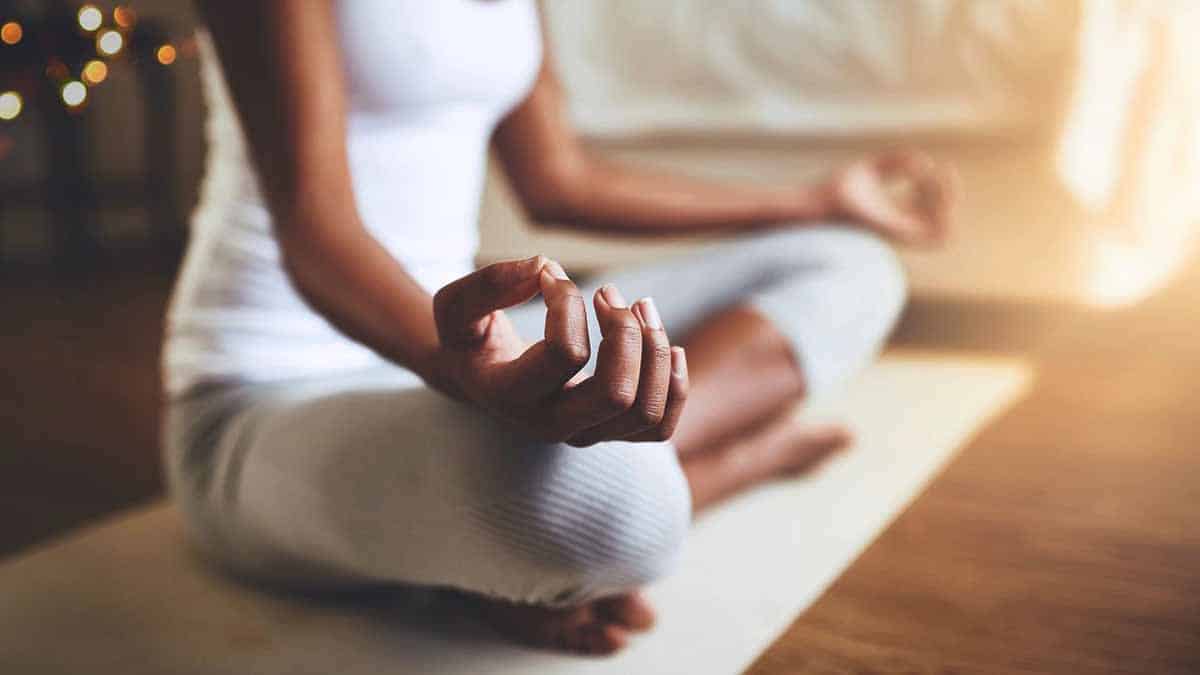You know that nagging voice that never seems to stop worrying and second-guessing? It’s time to tell that voice to pipe down so you can start living more peacefully.
Easier said than done, right? You can learn to quiet that noisy mind with simple mindfulness techniques and start appreciating each moment.
Don’t believe it? Give these techniques a shot for a week and see how much calmer and more content you feel. You have nothing to lose but your anxiety and stress. So find a quiet spot, take a few deep breaths, and dive in. Your peaceful mind is waiting.
The Benefits of Living Mindfully
Living with awareness has several benefits for your overall health, including emotional and physical well-being.
- It has reduced stress and anxiety. Spending time each day focused on breathing and the present moment helps shift your mind from worries about the future to regrets about the past. It can help lower cortisol levels and decrease feelings of stress and anxiety.
- You have improved concentration and focus. Mindfulness meditation trains your brain to avoid distractions and focus on one thing at a time. It can help boost your concentration and attention span.
- Better sleep. Mindful meditation relaxes your body and mind, releasing any tensions built up during the day. It can help you fall asleep faster and sleep more soundly through the night.
- Increased self-awareness. Observing your thoughts and emotions leads to a stronger connection with your inner self. You gain insight into your habits, behaviors, and triggers. This self-awareness is the first step to making positive life changes.
- Healthier mind and body. In conjunction with the potential benefits of incorporating CBD & THC gummies, mindfulness may help reduce blood pressure and inflammation. Researchers have also linked mindfulness to changes in brain areas responsible for learning and memory, one’s sense of self, and empathy.
Mindfulness is simple to learn but challenging to master. Meditating for 5 or 10 minutes daily a few times a week can provide significant benefits. So, take a few minutes daily to sit, breathe, and be fully present. Your mind and body will thank you.
Beginner Mindfulness Practices to Start Your Journey
To start living a more peaceful life, begin with simple mindfulness practices.
Deep Breathing
Taking deep, slow breaths is a quick and easy way to become more mindful. Breathe in through your nose and out through your mouth, making your exhale longer than your inhale.
Focus on your breath moving in and out. Even just 30 seconds can help you feel calmer and more centered.
Mindful Observation
Spend a few minutes each day noticing the little details in your surroundings. What do you see, hear, smell, feel, taste? Observe the colors, sounds, textures, and scents around you.
Pay close attention to the present moment rather than dwelling on the past or worrying about the future.
Body Scan
A body scan meditation helps increase your awareness of your physical body. Systematically tense and relax different muscle groups one by one. Start at your feet and work up to your head, tensing and releasing each area.
Notice how your body feels at each moment. Release any tension or discomfort. This practice helps reduce stress and promote relaxation.
Limit Distractions
Minimize interruptions from electronics like phones, TVs, and computers. Spend time each day unplugged and undistracted. Do one thing at a time and give it your full attention.
Savor simple pleasures without trying to multitask. Limit social media use and be present in your conversations and interactions.
Practicing mindfulness, even in small ways, can help you worry less, focus more, and find inner peace. Keep going if it feels difficult at first. Start small and be gentle with yourself. Over time, these techniques will become second nature.
Advanced Mindfulness Techniques for Deeper Awareness
Once you’ve got the basics of mindfulness down, you can explore more advanced techniques to deepen your practice.
These methods take mindfulness to the next level by increasing awareness and concentration.
Body Scan Meditation
Slowly scan your awareness through your body, tensing and relaxing different muscle groups individually. Start at your toes and feet, then ankles, calves, knees, thighs, hips, abdomen, chest, shoulders, arms, neck, face, and the top of your head.
Release any tension and notice how each area feels. It helps you develop a stronger mind-body connection.
Visualization
Create peaceful scenes in your mind to relax your body and mind. You might visualize a beautiful beach, mountain vista, or other calming landscape.
Try adding sounds, scents, and textures to make it more immersive. Studies show visualization can decrease anxiety and stress hormones while increasing feelings of peace.
Mantra Meditation
Repeat a calming word, thought, or phrase to prevent distracting thoughts. The repetition focuses your mind and allows you to transcend everyday worries and stresses. Popular mantras include “om,” “I am peace,” or “Be still and know.” You can also create your mantra.
Yoga or Tai Chi
These gentle exercises combine fluid movements with deep breathing and mindfulness. As you slowly flow through poses or forms, focus on how your body feels in each position.
Yoga and tai chi are highly effective for both physical and mental well-being. Even just 10 to 15 minutes a day can make a difference.
The more you practice, the more adept you’ll become at these advanced techniques. Be patient and gentle with yourself, as progress may feel slow. But you’ll gain valuable insights and a deep inner calm over time. Make mindfulness a habit for life.
Creating a Daily Mindfulness Routine
Creating a daily mindfulness routine is one of the best ways to make mindfulness a habit and reap the benefits. Start with just a few minutes a day of one or two simple practices, and build up from there as it becomes second nature.
Morning meditation
Begin your day with a short meditation, even for 5 or 10 minutes. Sit comfortably, close your eyes, and focus on your breath moving in and out.
When your mind wanders, gently bring your focus back to your breath. A morning meditation will set a peaceful tone for your day and prime your mind to be more present and less reactive.
Brief body scan
While having your morning coffee or tea, do a quick body scan. Systematically tense and relax different muscle groups in your body one by one.
Start at your toes and feet, then ankles, calves, knees, thighs, hips, abdomen, chest, shoulders, arms, wrists, hands, fingers, neck, and face. Release any tension and notice how each area feels. It can take as little as a minute but benefits the body and mind.
Mindful moments
Build more mindfulness into your daily routine by choosing one or two ordinary activities to do mindfully each day, like brushing your teeth, taking a shower, or eating a meal. Pay close attention to the sensations and be fully present in the moment.
Notice the texture of your toothbrush, the temperature of the water, and the flavors and aromas of your food. These mindful moments help train your brain to be more focused and aware.
With regular practice of these simple techniques, you’ll find yourself feeling calmer and more at ease. Don’t be hard on yourself if you struggle or forget sometimes. Mindfulness is a journey, not a destination.
Approach each day, and each mindfulness practice with patience, compassion, and curiosity. Keep practicing and make adjustments as needed to find what works for you. The benefits of a regular mindfulness routine are well worth the effort.
Overcoming Obstacles to Mindfulness
Overcoming obstacles is a vital part of cultivating mindfulness. Several common barriers can derail your practice or make it challenging. Here are a few of the biggest obstacles and how to overcome them:
Lack of time
It’s easy to say you don’t have time for mindfulness, but you can fit it in whenever you have a spare moment.
Do a quick body scan while waiting in line or practice mindful breathing while walking between meetings. Start with just 1-2 minutes a day of mindfulness and build up from there. Every little bit helps.
Distraction
Our minds often wander to thoughts of the past or future, making it hard to focus on the present. Don’t judge yourself for becoming distracted.
Gently guide your focus back to your breath or the sensations in your body. With regular practice, your ability to concentrate will improve.
Discouragement
Keep going even if you find mindfulness challenging. Like any skill, it takes practice. Be patient and kind to yourself.
Notice any small shifts or benefits, however subtle. Over time, the benefits will become more apparent. Staying motivated will keep you on the path to progress.
Lack of belief
Some people are skeptical that mindfulness can help reduce stress and increase well-being. The only way to know for sure is to try it yourself. Research the scientifically proven benefits of mindfulness to build your motivation.
Then, commit to practicing for a few weeks to experience the benefits firsthand. An open and willing attitude can make a big difference.
The obstacles to mindfulness are normal and unavoidable. With regular practice, these barriers will feel less intimidating.
Stay patient, and remember why you started this journey. Your motivation and commitment to inner peace will inspire you to overcome any challenges along the way.
Conclusion
So, you can use some simple mindfulness techniques today to worry less and live more. Take a few deep breaths, notice the little details around you, and spend time doing something you’re passionate about each day.
Make the time to unplug from technology and be fully present in the moment. Start small by picking one technique to focus on each week. You’ll soon find that being attentive is second nature, and you’ll be well on your way to leading a more tranquil and fulfilling life.
What are you waiting for? Put down your phone, close your laptop, and start living in the now. Your worried and distracted mind will thank you.
